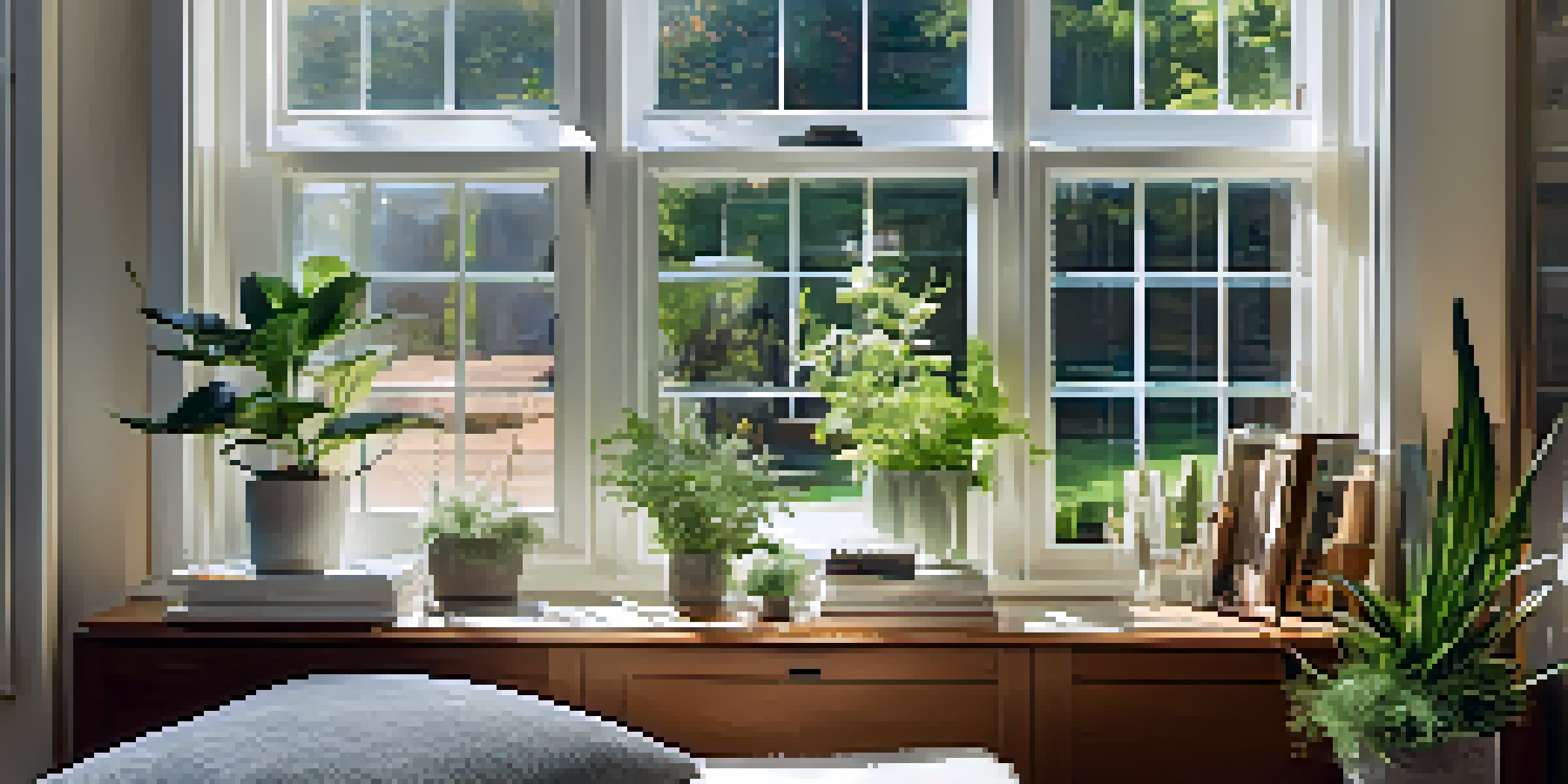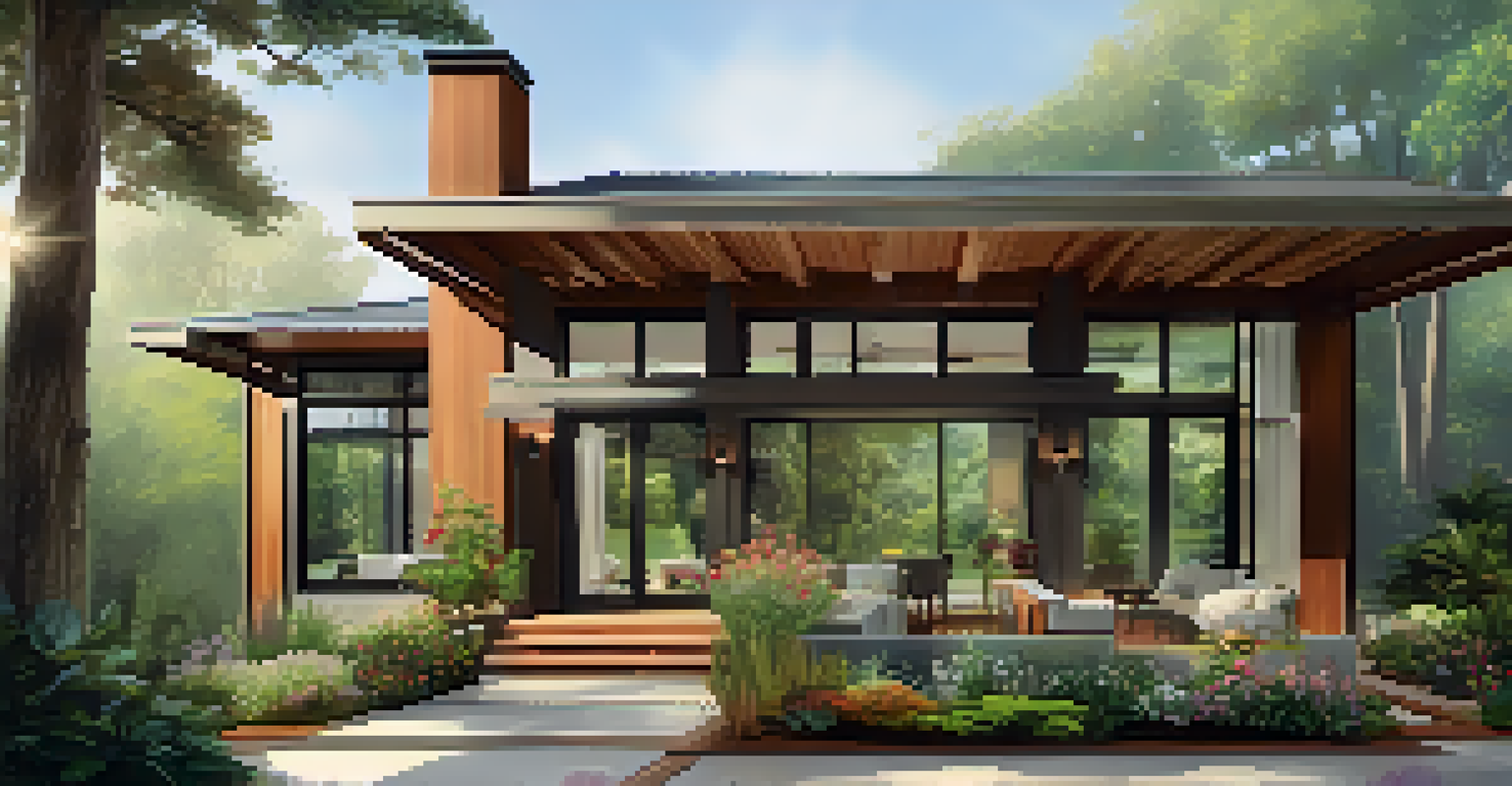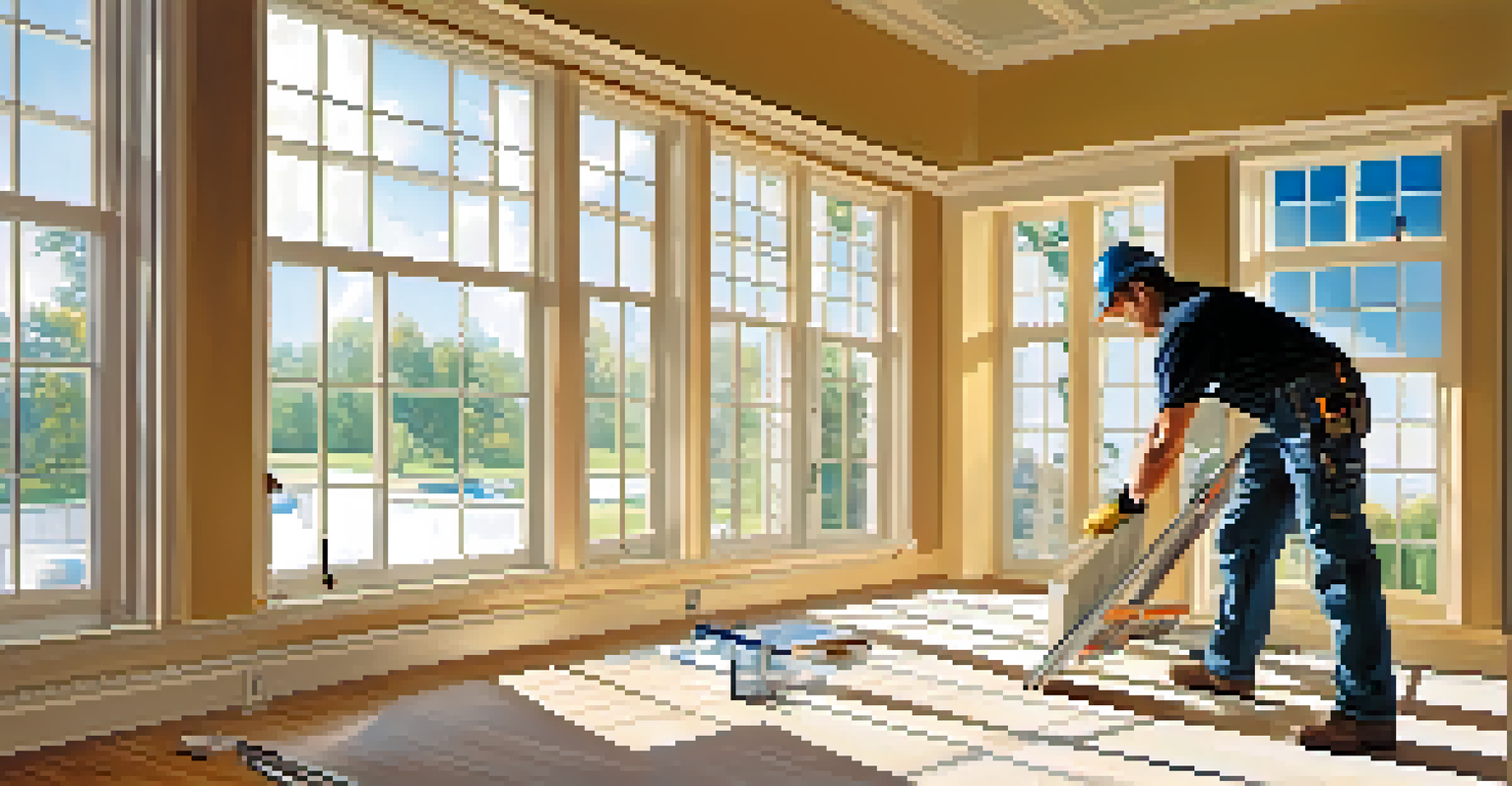Energy-Efficient Windows: Enhancing Comfort and Savings

What Are Energy-Efficient Windows and How Do They Work?
Energy-efficient windows are designed to minimize heat transfer between the inside and outside of your home. They typically feature multiple panes of glass, special coatings, and gas fills that improve insulation. By reducing the amount of heat that escapes in winter or enters in summer, these windows help maintain a stable indoor temperature.
Energy efficiency is not just a policy choice; it's a lifestyle choice that can lead to significant savings and a healthier planet.
Imagine trying to keep a cold drink warm on a chilly day—without proper insulation, the warmth escapes quickly. Energy-efficient windows work similarly, keeping your home cozy by preventing unwanted heat loss or gain. This not only enhances your comfort but also boosts your home's energy performance.
In essence, investing in energy-efficient windows is like wrapping your home in a warm blanket. They provide a barrier against temperature fluctuations, leading to less reliance on heating and cooling systems, which can save you money in the long run.
The Benefits of Energy-Efficient Windows for Homeowners
One of the most significant benefits of energy-efficient windows is their ability to reduce energy bills. By improving insulation, these windows can decrease the workload on your HVAC system, leading to lower monthly energy costs. Homeowners often report savings of 10-25% on their utility bills after making the switch.

In addition to cost savings, energy-efficient windows contribute to a more comfortable living environment. They help eliminate cold drafts and hot spots in your home, allowing for consistent temperatures throughout. Imagine enjoying a cozy winter evening without feeling a chill from poorly insulated windows.
Energy Savings with Efficient Windows
Energy-efficient windows significantly reduce energy bills by improving insulation and decreasing reliance on HVAC systems.
Moreover, upgrading to energy-efficient windows can enhance your home's value. Potential buyers are often attracted to homes with modern, efficient features, making it a smart investment for the future. It's not just about savings today; it's about increasing your home's appeal tomorrow.
Types of Energy-Efficient Windows Available Today
There are several types of energy-efficient windows, each designed to suit different needs and budgets. Double-glazed and triple-glazed windows are popular options, consisting of multiple panes of glass separated by insulating gas. The more panes, the better the insulation, which is essential for extreme climates.
The best way to predict the future is to create it, and energy-efficient windows are a step towards a sustainable future.
Another option is low-E glass, which has a special coating that reflects heat while allowing sunlight to enter. This type of glass helps keep your home warm in winter and cool in summer. Think of it as a sunscreen for your windows, protecting your interior from harmful UV rays while still letting in natural light.
Lastly, consider window frames made from energy-efficient materials like vinyl, fiberglass, or wood. These materials offer better thermal performance than traditional aluminum frames, ensuring that your windows are not only stylish but also functional. Choosing the right type of window can significantly impact your home's energy efficiency.
How to Choose the Right Energy-Efficient Windows for Your Home
When selecting energy-efficient windows, it's essential to consider your climate and specific needs. Look for windows with a high Energy Star rating, which indicates they meet strict energy efficiency guidelines. Understanding your local climate will help determine the right features for optimal performance.
Additionally, pay attention to the window's U-factor and Solar Heat Gain Coefficient (SHGC). The U-factor measures the window's insulation capability, while the SHGC assesses how much heat from sunlight enters your home. Balancing these factors will help you choose windows that provide comfort year-round.
Types of Energy-Efficient Windows
There are various types of energy-efficient windows, including double-glazed, low-E glass, and energy-efficient frames, each offering unique benefits.
Lastly, consult with a professional to ensure that the installation process is handled correctly. Proper installation is crucial for maximizing efficiency and performance. Remember, even the best windows won't perform well if they're not installed properly—just like a great recipe requires careful execution.
Installation Considerations for Energy-Efficient Windows
Installing energy-efficient windows is a significant investment, and getting it right is crucial for maximizing benefits. First, consider hiring a professional contractor who specializes in window installation. They can ensure that your new windows are fitted correctly, which is key to achieving optimal energy efficiency.
Before installation, make sure to assess your current window frames. If they are damaged or rotting, it may be necessary to replace them as well. A solid foundation is essential for the longevity and effectiveness of your new energy-efficient windows.
Finally, don't forget about the importance of proper weather stripping and sealing. Small gaps can lead to drafts and energy loss, negating the benefits of your new windows. A thorough inspection and attention to detail during the installation process will help you enjoy your windows' full potential.
Energy-Efficient Windows and Their Impact on the Environment
Energy-efficient windows play a crucial role in reducing your home's carbon footprint. By lowering energy consumption, you contribute to less demand on power plants, which often rely on fossil fuels. This reduction in energy use helps decrease greenhouse gas emissions, making a positive impact on the environment.
Additionally, these windows promote sustainable living by encouraging the use of renewable energy sources. As homes become more energy-efficient, the shift towards solar and other renewable energy options becomes more feasible. It's a win-win situation for both homeowners and the planet.
Environmental Impact of Windows
Choosing energy-efficient windows helps reduce your carbon footprint and promotes sustainable living by lowering energy consumption.
Every small step towards energy efficiency counts. By choosing energy-efficient windows, you're not just enhancing your comfort and saving money—you're also taking part in a larger movement towards sustainability and environmental responsibility.
Maintaining Your Energy-Efficient Windows for Longevity
To ensure your energy-efficient windows continue to perform at their best, regular maintenance is key. Start by cleaning the glass and frames to maintain their clarity and appearance. A simple mixture of water and mild soap can do wonders without damaging the special coatings.
Inspect the seals and weather stripping periodically for any signs of wear or damage. Replacing these components promptly can help prevent drafts and energy loss. Just like a good routine check-up for your car, keeping an eye on your windows ensures they remain in top shape.

Lastly, be mindful of the landscaping around your windows. Tall trees and shrubs can block sunlight, impacting the natural heating benefits of your windows. Trim them regularly to maintain a balance between energy efficiency and the aesthetic appeal of your home.